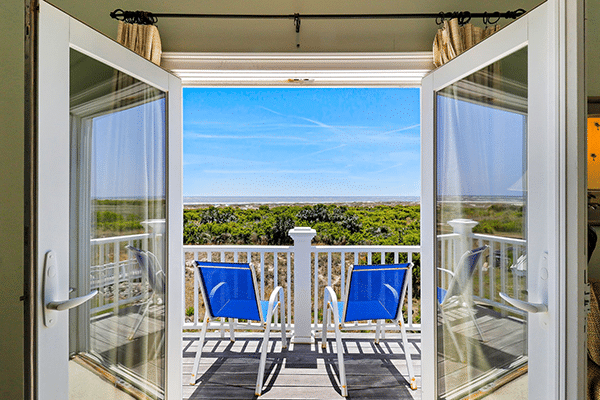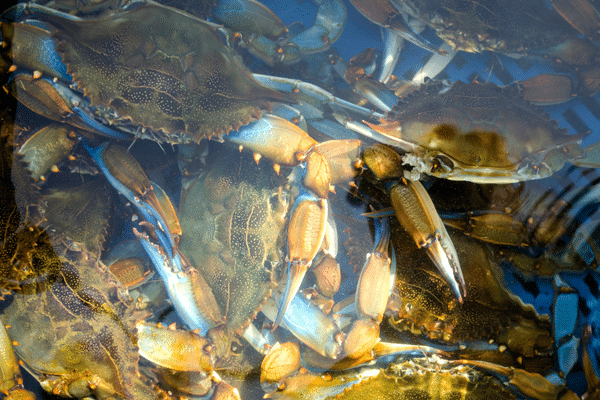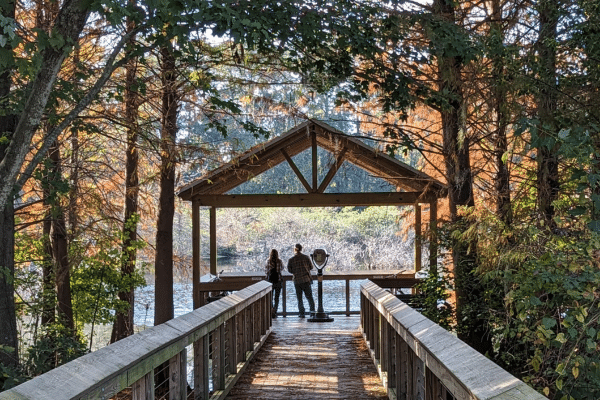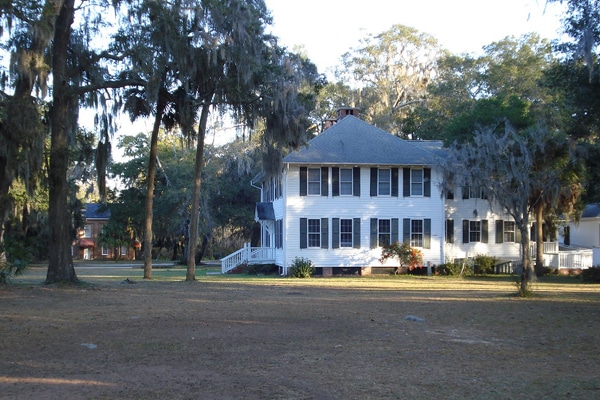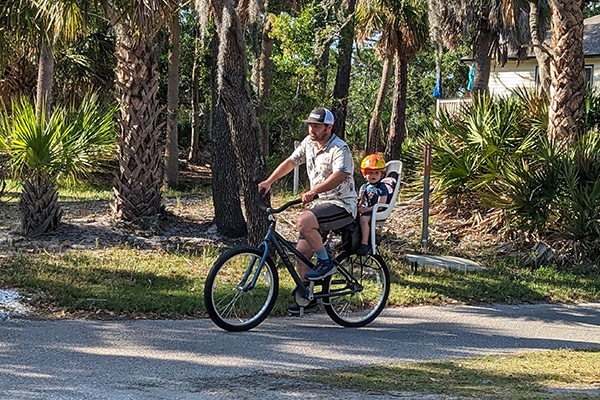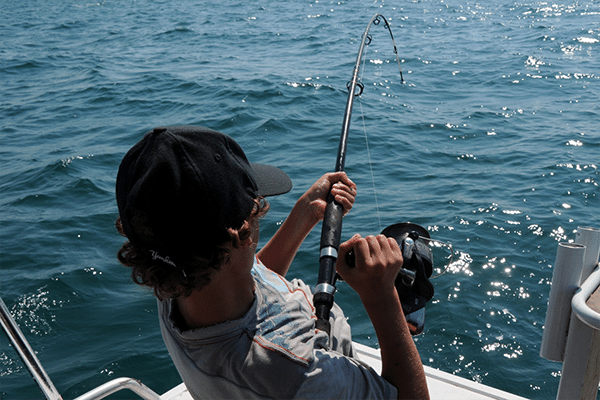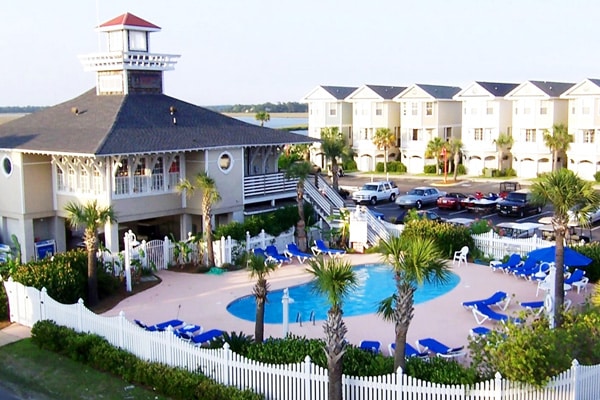
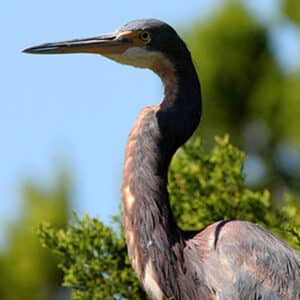
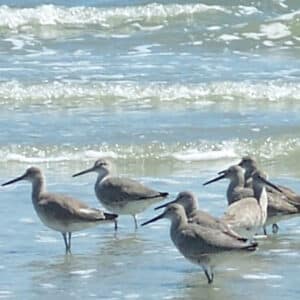
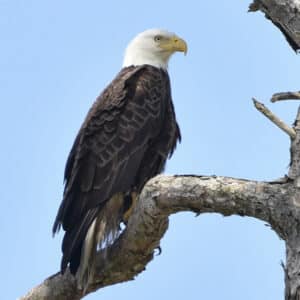
Over 80 species of birds reside on Fripp Island. Birds travel from all over the country to visit Fripp during our warm summer season. The birds love Fripp so much that the National Audubon society named Fripp Island an Important Bird Area.
Some of the species you can view at Fripp are:
- Osprey
- White Ibis
- Red Throated Loon
- Black Skimmer
- Double Crested Cormorant
- Scoter
- Old Squaw
- Great Blue Heron
Visit the South Carolina Audubon Society for more information.
Want to learn more about bird species on Fripp? Check out a full list of the birds on Fripp Island.
If you’ve posted up at the inlet this summer I’m sure you’ve heard this guy coming and going. He certainly makes his presence known. American Oystercatcher - Manasquan Inlet, July 2021. #oystercatcher #americanoystercatcher #birds #birdsofinstagram #best_bird_shots #best_birds_of_ig #best_birds_planet #best_birds_of_world #macro_perfection #photographyinmyframe #oceanvirals #allkindsofmagic #allkindsofnature #jshn #nj #newjersey #sharetheshore #audbonsociety #earthfocus #featured_wildlife #global_creatives #planetbirds #shorebirds #whatschirping #animal_elite #macro_brilliance #birdsonearth #birds_adored #natgeoyourshot

If you’ve posted up at the inlet this summer I’m sure you’ve heard this guy coming and going. He certainly makes his presence known. American Oystercatcher - Manasquan Inlet, July 2021. #oystercatcher #americanoystercatcher #birds #birdsofinstagram #best_bird_shots #best_birds_of_ig #best_birds_planet #best_birds_of_world #macro_perfection #photographyinmyframe #oceanvirals #allkindsofmagic #allkindsofnature #jshn #nj #newjersey #sharetheshore #audbonsociety #earthfocus #featured_wildlife #global_creatives #planetbirds #shorebirds #whatschirping #animal_elite #macro_brilliance #birdsonearth #birds_adored #natgeoyourshot
Reddish egrets are usually solitary when feeding and often maintain a certain distance from other egrets. They are quite territorial and can be seen chasing away intruders from their hunting grounds.
..
..
#reddishegret #egrets #naturehippys_ #eye_spy_birds #planetbirds #nuts_about_birds #bestoftheusa_birds #wildlifeaddicts #yourshotphotographer #best_birds_of_ig #bestbirdshots #wildlifeplanet #birdsofinstagram #birds_captures #naturebrilliance #floridaexplored #birdsonearth #birds_bees_flowers_n_trees #wildlifeonearth #sharetheshore #floridawildlife #nuts_about_wildlife #birdsphotography

Reddish egrets are usually solitary when feeding and often maintain a certain distance from other egrets. They are quite territorial and can be seen chasing away intruders from their hunting grounds.
..
..
#reddishegret #egrets #naturehippys_ #eye_spy_birds #planetbirds #nuts_about_birds #bestoftheusa_birds #wildlifeaddicts #yourshotphotographer #best_birds_of_ig #bestbirdshots #wildlifeplanet #birdsofinstagram #birds_captures #naturebrilliance #floridaexplored #birdsonearth #birds_bees_flowers_n_trees #wildlifeonearth #sharetheshore #floridawildlife #nuts_about_wildlife #birdsphotography
Wilson`s Plovers are slightly larger than several of the small plovers in the family, and they have a more southerly distribution, living on beaches along the southern Atlantic and Gulf Coasts.
Don’t forget to #ShareTheShore with this adorable plover and our other beloved coastal birds if you’re heading to the beach this summer! You can help keep them safe by giving them at least 100 feet of space so they can nest and rest. 💖
A Wilson`s Plover parent stays close to its chick on the beach. 📷: Jean Hall/Audubon Photography Awards

Wilson`s Plovers are slightly larger than several of the small plovers in the family, and they have a more southerly distribution, living on beaches along the southern Atlantic and Gulf Coasts.
Don’t forget to #ShareTheShore with this adorable plover and our other beloved coastal birds if you’re heading to the beach this summer! You can help keep them safe by giving them at least 100 feet of space so they can nest and rest. 💖
A Wilson`s Plover parent stays close to its chick on the beach. 📷: Jean Hall/Audubon Photography Awards
Newborn Least Tern struggling to get down its breakfast. Sunrise - July 2021 in theoceancounty NJ. #leasttern #audubonsociety #birds #birdsofinstagram #best_bird_shots #best_birds_of_ig #best_birds_planet #best_birds_of_world #photographyinmyframe #oceanvirals #allkindsofmagic #allkindsofnature #jshn #nj #newjersey #sharetheshore #audbonsociety #earthfocus #featured_wildlife #global_creatives #planetbirds #shorebirds #whatschirping #animal_elite #macro_perfection #macro_brilliance #birdsonearth #birds_adored #natgeo

Newborn Least Tern struggling to get down its breakfast. Sunrise - July 2021 in theoceancounty NJ. #leasttern #audubonsociety #birds #birdsofinstagram #best_bird_shots #best_birds_of_ig #best_birds_planet #best_birds_of_world #photographyinmyframe #oceanvirals #allkindsofmagic #allkindsofnature #jshn #nj #newjersey #sharetheshore #audbonsociety #earthfocus #featured_wildlife #global_creatives #planetbirds #shorebirds #whatschirping #animal_elite #macro_perfection #macro_brilliance #birdsonearth #birds_adored #natgeo
You all got a sneak peek of this pup last week, but now we can officially introduce him as Griffin!
Griffin was found on the outer coast, suffering from maternal separation and malnutrition, and arrived at the Rescue Center on May 12th. Since then, he’s been getting four meals of harbor seal milk substitute a day, and all the vitamins and medications he needs to regain his health.
Stay tuned for updates on Griffin, and please remember to keep your distance from seals resting along the shoreline so we can keep pups and moms together in the wild.
#ShareTheShore #HarborSeal #Seal #WildlifeRehab

You all got a sneak peek of this pup last week, but now we can officially introduce him as Griffin!
Griffin was found on the outer coast, suffering from maternal separation and malnutrition, and arrived at the Rescue Center on May 12th. Since then, he’s been getting four meals of harbor seal milk substitute a day, and all the vitamins and medications he needs to regain his health.
Stay tuned for updates on Griffin, and please remember to keep your distance from seals resting along the shoreline so we can keep pups and moms together in the wild.
#ShareTheShore #HarborSeal #Seal #WildlifeRehab
Roseate Spoonbill~ Platalea ajaja
••
f/4, 1/4000, ISO160, 400mm
••
#roseatespoonbill #wadingbirds #birds_captures #raw_birds #birds_nature #bird_brilliance #birdphotography #birdsofinstagram #birdsonearth #birds_perfection #nature_brilliance #planetbirds #eye_spy_birds #birdlife #birdstagram #wildplanet #bestbirdshots #best_birds_of_ig #birdsfreaks #birdselite #total_birds #InstaBirds #BirdOfTheDay #yourshotphotographer #audubonsociety #sharetheshore #sanibelisland

Roseate Spoonbill~ Platalea ajaja
••
f/4, 1/4000, ISO160, 400mm
••
#roseatespoonbill #wadingbirds #birds_captures #raw_birds #birds_nature #bird_brilliance #birdphotography #birdsofinstagram #birdsonearth #birds_perfection #nature_brilliance #planetbirds #eye_spy_birds #birdlife #birdstagram #wildplanet #bestbirdshots #best_birds_of_ig #birdsfreaks #birdselite #total_birds #InstaBirds #BirdOfTheDay #yourshotphotographer #audubonsociety #sharetheshore #sanibelisland
Yawns are contagious 🥱
#pipingplover #plover #ploverlover #shorebirds #shorebirdsofinstagram #shorebirds_habitat #birdwatching #birdwatchingphotography #birding #birdingphotography #birds #birdnerds #birdlovers #birdwatchers #birdsofinstagram #birdstagram #birdphotography #sonyrx10iv #savethebirds #bringbirdsback #birdstellus #beach #beachbirds #sharetheshore #dontbetrashy #savetheocean #saveourshores #protecttheplovers #yawn #pipl

Yawns are contagious 🥱
#pipingplover #plover #ploverlover #shorebirds #shorebirdsofinstagram #shorebirds_habitat #birdwatching #birdwatchingphotography #birding #birdingphotography #birds #birdnerds #birdlovers #birdwatchers #birdsofinstagram #birdstagram #birdphotography #sonyrx10iv #savethebirds #bringbirdsback #birdstellus #beach #beachbirds #sharetheshore #dontbetrashy #savetheocean #saveourshores #protecttheplovers #yawn #pipl
Least Tern providing shelter to its 2 day old chick earlier today. July 5, 2021. Ocean County, NJ. 🇺🇸 🐣 #leasttern #audubonsociety #birds #birdsofinstagram #best_bird_shots #best_birds_of_ig #best_birds_planet #best_birds_of_world #photographyinmyframe #oceanvirals #allkindsofmagic #allkindsofnature #jshn #nj #newjersey #sharetheshore #audbonsociety #earthfocus #featured_wildlife #global_creatives #planetbirds #zcreators #nikonz7ii #shorebirds #whatschirping #animal_elite #macro_perfection #macro_brilliance #birdsonearth #birds_adored

Least Tern providing shelter to its 2 day old chick earlier today. July 5, 2021. Ocean County, NJ. 🇺🇸 🐣 #leasttern #audubonsociety #birds #birdsofinstagram #best_bird_shots #best_birds_of_ig #best_birds_planet #best_birds_of_world #photographyinmyframe #oceanvirals #allkindsofmagic #allkindsofnature #jshn #nj #newjersey #sharetheshore #audbonsociety #earthfocus #featured_wildlife #global_creatives #planetbirds #zcreators #nikonz7ii #shorebirds #whatschirping #animal_elite #macro_perfection #macro_brilliance #birdsonearth #birds_adored
Reddish egrets ~ Egretta rufescens
..
..
..
#reddishegret #egrets #naturehippys_ #eye_spy_birds #planetbirds #nuts_about_birds #bestoftheusa_birds #wildlifeaddicts #yourshotphotographer #best_birds_of_ig #bestbirdshots #wildlifeplanet #conserveflorida #floridawildlifecorridor #birdsofinstagram #birds_captures #naturebrilliance #sonyalpha #birdsonearth #keepflwild #birds_bees_flowers_n_trees #wildlifeonearth #sharetheshore #floridawildlife #nuts_about_wildlife #birdsphotography

Reddish egrets ~ Egretta rufescens
..
..
..
#reddishegret #egrets #naturehippys_ #eye_spy_birds #planetbirds #nuts_about_birds #bestoftheusa_birds #wildlifeaddicts #yourshotphotographer #best_birds_of_ig #bestbirdshots #wildlifeplanet #conserveflorida #floridawildlifecorridor #birdsofinstagram #birds_captures #naturebrilliance #sonyalpha #birdsonearth #keepflwild #birds_bees_flowers_n_trees #wildlifeonearth #sharetheshore #floridawildlife #nuts_about_wildlife #birdsphotography
The Fripp Island Resort offers two Birding Nature Tours. Please follow the link below to view the availible tours and scheduling information.


